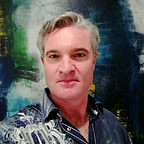How can I Explore my Memories?
This exercise strengthens your internal consciousness sense of memory. Our memory is an incredible part of consciousness, and not that well understood by neuroscientists or psychologists. Memory is one of our internal consciousness senses. The others are thinking, emotions, imagination and proprioception. We use our internal consciousness senses to explore and make sense of our personal inner world.
This is a solo exercise, and a basic self-reflection meditation practice. Sit or lie in a quiet place, with your phone switched to silent, and with your eyes closed. Your posture is not important as long as you are comfortable.
Expected Results: This exercise will increase your awareness of your internal consciousness sense of memory. You may find that after the exercise, you have a new appreciation of what your memory is capable of. It will strengthen your skills at managing consciousness deliberately, and slow down reactive thinking and emotions.
Important! Please start with a positive memory, not a negative one! Using a negative memory requires more advance attention skills, because it is very easy to react to and be distracted by negative emotions. That might lead you to get stuck in more negativity than you have the capability or time to deal with.
Duration: About 10 minutes
Instructions:
First, direct your attention to a positive memory. Spend a few seconds locating the memory and the first few details of it. Do this for about 30 seconds.
Next, direct all your attention to just what you are seeing in that memory. Really experience every visual detail fully, notice the brightness, the contrasts, the movements, shade, and colors of whatever you see. Do this for about 30 seconds.
Next, direct all your attention to just what you are hearing in that memory. Really experience every sound fully, whether voices, nature, music or even silence. Do this for about 30 seconds.
Next, direct all your attention to what your were touching in that memory. Really experience every texture of where you sat or stood, the heat or cold that day, and any other surfaces, textures or sensations of touch. Do this for about 30 seconds.
Next, direct all your attention to smell of everything around you in that memory, trying to identify every smell and distinguish the differences between them as clearly as possible. Do this for about 30 seconds.
Next, switch all your attention to any emotions you felt in that memory. Try and detect as clearly as possible which emotion you felt, and feel it as if you were right there again. Gently back off if any emotion gets a little overwhelming. Do this for about 30 seconds.
Repeat the sequence with memories from different times in your life. After this exercise, you should feel more present to the world around you, your thinking mind should have slowed down.
How this exercise works
Our brains don’t like to multi-task, even though it can feel like we are more productive doing so. Unfortunately, modern social media and apps make us lazy with both our attention management skills and our memory skills. This simple exercise trains you to deliberately narrow your mental focus, and to switch that focus. This restores mental energy and clarity, and is a powerful preparation for more advanced meditation practices.
You brain can only handle a limited focus of attention at a time. When you control your attention deliberately, and direct it to just one consciousness sense at a time, it will help your brain work most efficiently.
Our memory is much more powerful than we realize. It’s not just a tool for memorizing facts and figures. This exercise combines the internal consciousness sense of memory, with the external consciousness senses of sight, sound, touch, smell, and the internal consciousness sense of emotion.
This is not a thinking exercise. It’s a sensing exercise. Don’t think the process, really go ‘all in’ and focus 100% of your attention on the sense you are using to explore the memory as deeply as you can.
About the Author
Peter Hill loves to take time to think and feel deeply. Over thirty years, he has studied dozens of meditation, self development techniques and spiritual techniques. Guided by Neuroscience rather than mysticism, his mission is to teach people to live better lives by using their brains more effectively.
